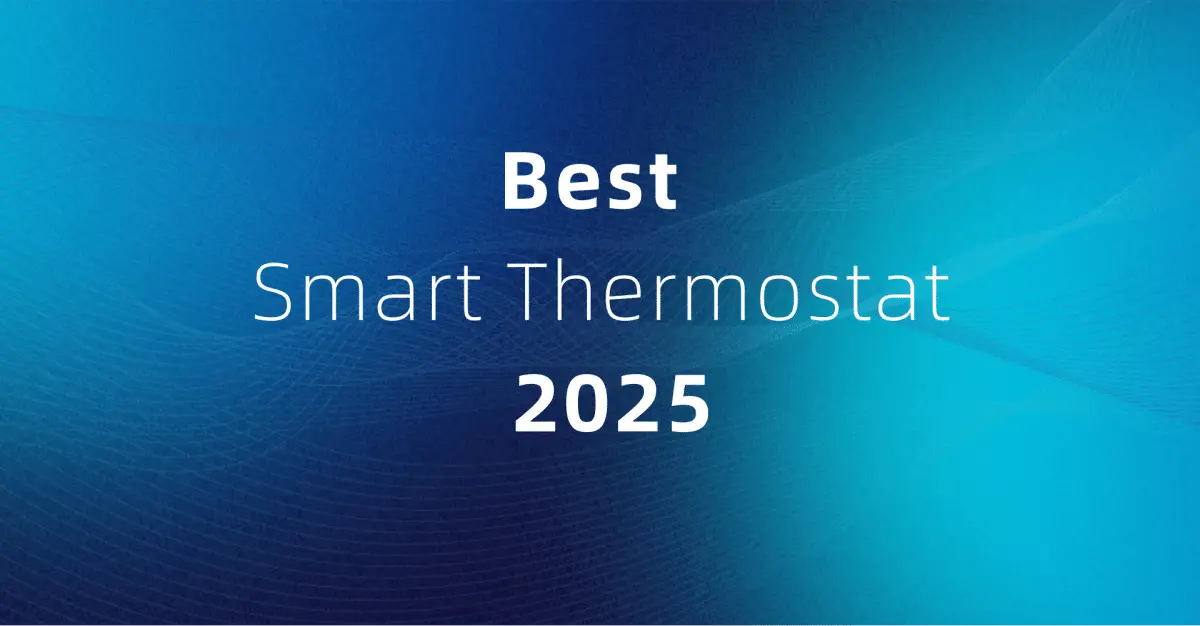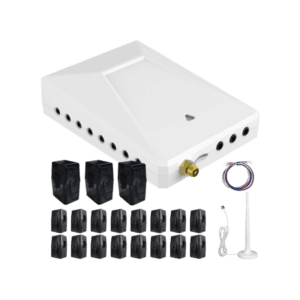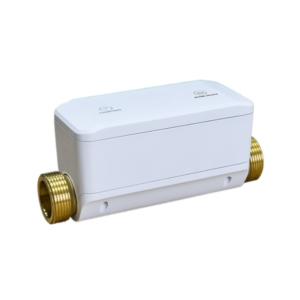1. What Makes a Smart Thermostat the Best in 2025?
Let’s start by answering: What do we mean by "best smart thermostat 2025"?
To qualify as "best," a smart thermostat should excel in the following areas:
| Criteria | Description |
|---|---|
| AI-Powered Learning | Learns your routines and automatically adjusts temperatures. |
| Wi-Fi and App Control | Remote access via smartphones, tablets, and smart home systems. |
| Energy Usage Analytics | Tracks HVAC usage, suggests optimizations, and estimates savings. |
| Compatibility & Integrations | Works with SmartThings, Alexa, Google Home, solar systems, and more. |
| Support for Multiple Systems | Compatible with heat pumps, baseboard heating, radiant floors, and multi-zones. |
In 2025, thermostats aren’t just smarter—they’re smarter than ever, with edge-based processing, predictive analytics, and deeper smart home integrations.
2. Top Smart Thermostat Ranks in 2025
According to recent industry research and consumer rankings (e.g., from TechRadar, Wirecutter, and CNET), the top-ranked smart thermostats in 2025 include:
| Rank | Model | Best For | Key Features |
|---|---|---|---|
| 1 | Grus EcoNet-TU | Heat pump homes | Solar-aware control, advanced scheduling, AI optimization |
| 2 | Nest Learning Thermostat | General smart home integration | Learning behavior, seamless Google ecosystem |
| 3 | Ecobee SmartThermostat | Voice control + sensors | Alexa built-in, multi-room sensors |
| 4 | Grus EcoNet-BH | Baseboard electric heating | High-voltage control, geofencing, mobile control |
| 5 | Honeywell T9 | Zoned heating/cooling | Room sensors, smart home compatibility |
🔍 Grus EcoNet series stands out for offering models tailored to specific HVAC types (e.g., baseboard or heat pump) and supporting solar + battery-aware automation—something mainstream brands still lack.
3. What Is the Best WiFi Thermostat 2025 for You?
Choosing the best WiFi thermostat 2025 depends on several factors:
- Your heating/cooling system type (central, radiant, heat pump, etc.)
- If you want energy usage reports and carbon footprint tracking
- Integration with solar production or smart meters
- Zoned vs. whole-home temperature control
- Whether you value on-device voice control, or prefer app + automation only
💡 Use Case: A Solar + Battery Home
If you have a solar PV system with battery storage, the Grus EcoNet-TU is a game-changer. It adapts HVAC operation to real-time solar production, increasing self-consumption and reducing grid reliance.
4. Feature Comparison: Top Smart Thermostats Side-by-Side
To help you make the best choice, here’s a detailed comparison of the leading smart thermostats in 2025:
| Model | HVAC Compatibility | Smart Home Integration | AI Learning | Solar/Battery Support | Voice Control |
|---|---|---|---|---|---|
| Grus EcoNet-TU | Heat pump, central AC | SmartThings, Alexa, Google | ✅ | ✅ (Real-time optimization) | ❌ |
| Grus EcoNet-BH | Electric baseboard heating | SmartThings, Alexa | ✅ | ❌ | ❌ |
| Nest Learning | Most central HVAC systems | Google Home, Alexa | ✅ | ❌ | ✅ (Google Assistant) |
| Ecobee SmartThermostat | Zoned + central | Apple HomeKit, Alexa, SmartThings | ✅ | ❌ | ✅ (Alexa built-in) |
| Honeywell T9 | Central systems | Alexa, SmartThings, Google | ⚠️ Limited | ❌ | ✅ |
✅ Highlight: Only Grus EcoNet-TU includes native support for solar production + battery-aware HVAC control.
5. Smart Thermostat in a Solar + Grid + Battery Home Setup
Let’s visualize how a smart thermostat like Grus EcoNet-TU fits into a modern energy ecosystem:
Smart Thermostat in an Energy-Aware Smart Home
graph TD; A[Power Grid] --> E[Main Panel] B[Solar Inverter] --> E C[Battery Storage] --> E E --> F["HVAC System"] F --> G["Grus EcoNet-TU Smart Thermostat"] G --> H["Grus App: Usage & Optimization Insights"] G --> I["SmartThings Home Automations"]
- 🏠 The Grus EcoNet-TU reads system power flow in real-time via the Grus WattPanel smart meter.
- 🔋 It shifts HVAC usage to align with solar generation and battery availability.
- 📱 Sends energy reports and comfort insights directly to your phone.
6. Real-World Example: Winter Heating Optimization
Scenario:
A user in Chicago installs Grus EcoNet-BH, a smart baseboard thermostat, and wants to reduce winter heating costs.
Before:
- Manual temperature settings
- High utility bills during peak hours
After:
- Thermostat reduces temperature automatically during 10am–3pm when no one is home
- Boosts temperature before residents return using geofencing
- Estimated 25% energy savings in the first month
📉 Monthly electricity usage dropped from 1200 kWh to 900 kWh.
7. Smart Features That Actually Matter in 2025
| Feature | Why It Matters |
|---|---|
| Predictive Scheduling | Reduces manual input and overuse of HVAC |
| Geofencing Automation | Eliminates waste when nobody is home |
| Humidity & Air Quality | Helps regulate comfort in variable climates |
| Over-the-Air Updates | Ensures access to future improvements |
| Utility Demand Response | Participates in grid optimization programs (where supported) |
✅ Tip: Always check whether your utility provider supports smart thermostat rebates or load response programs. Many offer 50–150 in annual incentives.
8. How to Install a Smart Thermostat (DIY or Pro?)
Installing a smart thermostat is typically straightforward, but it's important to match the thermostat to your HVAC wiring.
Basic Steps for DIY Installation:
- Turn off power to your HVAC system.
- Remove old thermostat, label the wires.
- Check for a C-wire (common wire) — required for many smart thermostats.
- Mount the new device and connect the wires.
- Power on and configure using the mobile app.
📌 Tip: If your system is high-voltage (like 240V baseboard heating), only use thermostats like Grus EcoNet-BH specifically designed for it.
9. Final Recommendation: Which Smart Thermostat is Best for You?
| Use Case | Best Option | Why |
|---|---|---|
| Solar + Battery + Heat Pump | Grus EcoNet-TU | Optimizes HVAC runtime based on solar generation and storage |
| Baseboard Electric Heating | Grus EcoNet-BH | Supports high-voltage systems, energy-efficient scheduling |
| Multi-room, Voice-Control Home | Ecobee SmartThermostat | Comes with room sensors and built-in Alexa |
| Simplicity and Reliability | Nest Learning Thermostat | Great for Google Home users, strong learning algorithm |
| Zoned or Central AC, Affordable | Honeywell T9 | Solid features with room sensors and broad compatibility |
🎯 No matter the brand, the key is alignment with your HVAC system and lifestyle.
🏡 Conclusion: Smart Homes Start with Smart Thermostats
A smart thermostat is the control center of your smart energy system. Whether you're trying to reduce your bills, automate your routines, or prepare your home for solar + battery upgrades, a smart thermostat is a small upgrade with a big return.
💡 With models like Grus EcoNet-TU and Grus EcoNet-BH, you can:
- Control comfort precisely
- Save energy daily
- Integrate seamlessly with SmartThings, solar power, and real-time monitoring
✅ Ready to Make Your Home Smarter?
Learn how baseboard, heat pump, and HVAC smart thermostats work — plus setup tips and energy-saving strategies.
Read the Smart Thermostat Heating Guide →Smart Thermostat Decision Flow
graph TD; A["What HVAC system do you have?"] --> B["Heat Pump or Central Air"] A --> C["Baseboard (240V)"] B --> D["Grus EcoNet-TU"] C --> E["Grus EcoNet-BH"] B --> F["Nest / Ecobee / Honeywell (if solar not needed)"]




